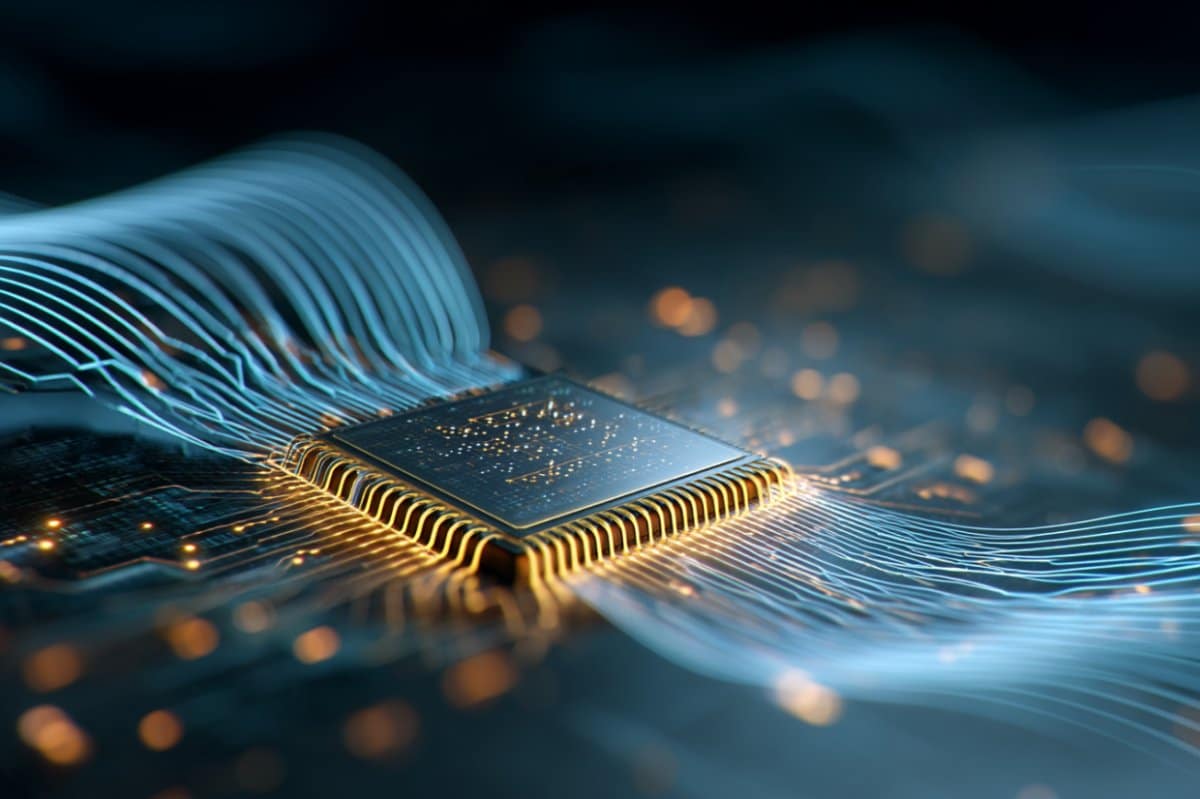Summary: Researchers have built the first “microwave brain” chip capable of processing both ultrafast data and wireless communication signals at once. By harnessing analog, nonlinear microwave physics instead of conventional digital circuitry, the chip can decode radio signals, track radar targets, and classify high-speed data streams in real time.
It matches the accuracy of digital neural networks while consuming a fraction of the power. The breakthrough could transform applications from secure wireless sensing to wearable edge computing.
Key Facts:
- Analog Microwave Neural Network: Processes data in tens of gigahertz without digital clock steps.
- High Efficiency: Operates at under 200 milliwatts while maintaining up to 88% accuracy.
- Broad Applications: From radar tracking to edge AI on portable devices.
Source: Cornell University
Cornell University researchers have developed a low-power microchip they call a “microwave brain,” the first processor to compute on both ultrafast data signals and wireless communication signals by harnessing the physics of microwaves.
Detailed August 11 in the journal Nature Electronics, the processor is the first, true microwave neural network and is fully integrated on a silicon microchip.
It performs real-time frequency domain computation for tasks like radio signal decoding, radar target tracking and digital data processing, all while consuming less than 200 milliwatts of power.

“Because it’s able to distort in a programmable way across a wide band of frequencies instantaneously, it can be repurposed for several computing tasks,” said lead author Bal Govind, a doctoral student who conducted the research with Maxwell Anderson, also a doctoral student.
“It bypasses a large number of signal processing steps that digital computers normally have to do.”
That capability is enabled by the chip’s design as a neural network, a computer system modeled on the brain, using interconnected modes produced in tunable waveguides. This allows it to recognize patterns and learn from data.
But unlike traditional neural networks that rely on digital operations and step-by-step instructions timed by a clock, this network uses analog, nonlinear behavior in the microwave regime, allowing it to handle data streams in the tens of gigahertz – much faster than most digital chips.
“Bal threw away a lot of conventional circuit design to achieve this,” said Alyssa Apsel, professor of engineering, who was co-senior author with Peter McMahon, associate professor of applied and engineering physics.
“Instead of trying to mimic the structure of digital neural networks exactly, he created something that looks more like a controlled mush of frequency behaviors that can ultimately give you high-performance computation.”
The chip can perform both low-level logic functions and complex tasks like identifying bit sequences or counting binary values in high-speed data. It achieved at or above 88% accuracy on multiple classification tasks involving wireless signal types, comparable to digital neural networks but with a fraction of the power and size.
“In traditional digital systems, as tasks get more complex, you need more circuitry, more power and more error correction to maintain accuracy,” Govind said. “But with our probabilistic approach, we’re able to maintain high accuracy on both simple and complex computations, without that added overhead.”
The chip’s extreme sensitivity to inputs makes it well-suited for hardware security applications like sensing anomalies in wireless communications across multiple bands of microwave frequencies, according to the researchers.
“We also think that if we reduce the power consumption more, we can deploy it to applications like edge computing,” Apsel said, “You could deploy it on a smartwatch or a cellphone and build native models on your smart device instead of having to depend on a cloud server for everything.”
Though the chip is still experimental, the researchers are optimistic about its scalability. They are experimenting with ways to improve its accuracy and integrate it into existing microwave and digital processing platforms.
Funding: The work emerged from an exploratory effort within a larger project supported by the Defense Advanced Research Projects Agency and the Cornell NanoScale Science and Technology Facility, which is funded in part by the National Science Foundation.
About this neurotech research news
Author: Becka Bowyer
Source: Cornell University
Contact: Becka Bowyer – Cornell University
Image: The image is credited to Neuroscience News
Original Research: Closed access.
“An integrated microwave neural network for broadband computation and communication” by Alyssa Apsel et al. Nature Electronics
Abstract
An integrated microwave neural network for broadband computation and communication
The development of high-bandwidth applications, including multi-gigabit communication and radar imaging, demands faster processing.
However, in the microwave regime, where frequencies exceed clock rates, sampling and computation become challenging.
Here we report an integrated microwave neural network for broadband computation and communication.
Our microwave neural network operates across tens of gigahertz but is reprogrammed with slow megabits per second control bitstreams. By exploiting strong nonlinearity in coupled microwave oscillations, it expresses its computation in a narrower spectrum, enabling easy read-out.
The system searches bit sequences in multi-gigabits per second data and emulates digital functions without custom circuits. It accelerates radio-frequency machine learning by classifying encoding schemes and detecting frequency shifts to track flight trajectories from radar.
The microwave neural network is fabricated with standard complementary metal–oxide–semiconductor technology.
It occupies a sub-wavelength footprint of 0.088 mm2 on chip and has a sub-200-mW power consumption, supporting integration in a general-purpose analogue processor.






